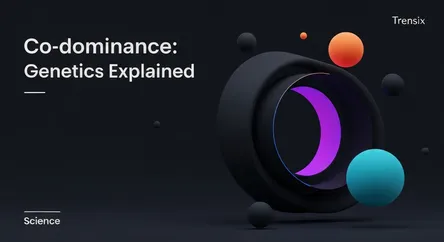Science
Co-dominance: Genetics Explained

Discover co-dominance, a genetic pattern where both alleles are fully expressed. Learn how it works with examples like human ABO blood types.
What is it?
Co-dominance is a form of genetic inheritance where two different versions (alleles) of a gene are both fully and separately expressed in an organism's traits. Unlike simple dominance where one allele masks the other, or incomplete dominance where traits blend, co-dominance results in a phenotype that shows both traits at once. A classic example is the roan coat in cattle, where alleles for red hair and white hair are both expressed, resulting in an animal with a mix of red and white hairs. The human ABO blood group system is another key example.
Why is it trending?
Co-dominance is a foundational concept in biology, often trending among students learning about non-Mendelian genetics. Its relevance is amplified by the boom in personal genomics and ancestry testing. As people explore their genetic makeup, they encounter complex inheritance patterns beyond simple dominant/recessive traits. This public interest, combined with ongoing research into genetic diseases and personalized medicine where understanding complex inheritance is key, keeps co-dominance a relevant and frequently discussed topic online.
How does it affect people?
The most significant impact of co-dominance is the ABO blood group system. The A and B alleles are co-dominant, so a person with both will have type AB blood. This is crucial for safe blood transfusions and organ transplants, as mixing incompatible blood types can be fatal. Co-dominance is also seen in sickle cell trait. Individuals with one normal and one sickle cell allele produce both normal and sickle-shaped red blood cells. While this doesn't cause full-blown anemia, it famously provides significant resistance to malaria.